Related Research Articles
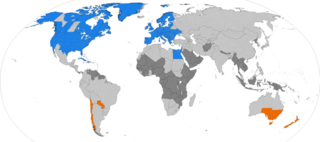
Daylight saving time (DST), also daylight savings time or daylight time and summer time, is the practice of advancing clocks during warmer months so that darkness falls later each day according to the clock. The typical implementation of DST is to set clocks forward by one hour in the spring and set clocks back by one hour in autumn to return to standard time. In other words, there is one 23-hour day in late winter or early spring and one 25-hour day in the autumn.
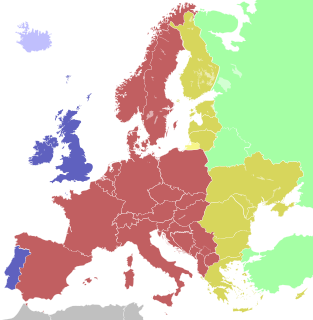
Summer time in Europe is the variation of standard clock time that is applied in most European countries in the period between spring and autumn, during which clocks are advanced by one hour from the time observed in the rest of the year, with a view to making the most efficient use of seasonal daylight. It corresponds to the notion and practice of daylight saving time (DST) to be found in many other parts of the world.

Time in New Zealand is divided by law into two standard time zones. The main islands use New Zealand Standard Time (NZST), 12 hours in advance of Coordinated Universal Time (UTC) / military M (Mike), while the outlying Chatham Islands use Chatham Standard Time (CHAST), 12 hours 45 minutes in advance of UTC / military M^ (Mike-Three).

The Atlantic Time Zone is a geographical region that keeps standard time—called Atlantic Standard Time (AST)—by subtracting four hours from Coordinated Universal Time (UTC), resulting in UTC−04:00. During part of the year, some portions of the zone observe daylight saving time, referred to as Atlantic Daylight Time (ADT), by moving their clocks forward one hour to result in UTC−03:00. The clock time in this zone is based on the mean solar time of the 60th meridian west of the Greenwich Observatory.

UTC+03:00 is an identifier for a time offset from UTC of +03:00. In areas using this time offset, the time is three hours later than the Coordinated Universal Time (UTC). Following the ISO 8601 standard, a time with this offset would be written as, for example, 2019-02-08T23:36:06+03:00.
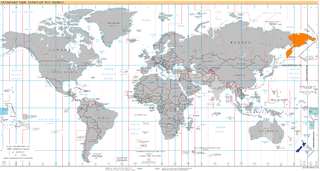
UTC+13:00 is an identifier for a time offset from UTC of +13:00.

Australia uses three main time zones: Australian Western Standard Time, Australian Central Standard Time, and Australian Eastern Standard Time. Time is regulated by the individual state governments, some of which observe daylight saving time (DST). Australia's external territories observe different time zones.
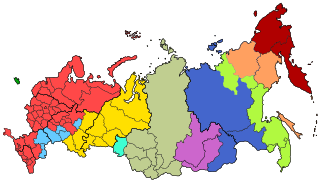
There are eleven time zones in Russia, which currently observe times ranging from UTC+02:00 to UTC+12:00. Daylight saving time is not used in Russia. From 27 March 2011 to 26 October 2014, permanent DST was used.

Canada is divided into six time zones, based on proposals by Scottish Canadian railway engineer Sir Sandford Fleming, who pioneered the use of the 24-hour clock, the world's time zone system, and a standard prime meridian. Most of Canada operates on standard time from the first Sunday in November to the second Sunday in March and daylight saving time the rest of the year.
Time in Chile is divided into three time zones. Most of Continental Chile uses the time offset UTC−04:00 in winter time and UTC−03:00 in summer time, while the Magallanes and Chilean Antarctica region uses the time offset UTC-03:00 the whole year. Additionally, Easter Island uses the time offset UTC−06:00 in winter time and UTC−05:00 in summer time

Bangladesh Standard Time (BST) is the time zone of Bangladesh. It is offset six hours ahead of Coordinated Universal Time, and observed as a national standard throughout the country. Bangladesh briefly observed daylight saving time (DST) in 2009 to cope with the ongoing electricity crisis, but in 2010 the decision was cancelled by the government of Bangladesh.

Mexico uses four main time zones since February 2015. Most of the country observes Daylight Saving Time.
- Zona Sureste covers the state of Quintana Roo is UTC-05:00 year round. It is the equivalent of U.S. Eastern Standard Time, and is the only Mexican state to use Eastern Time.
- Zona Centro covers the eastern three-fourths of Mexico, including Mexico City, Guadalajara and Monterrey. For most of the year, it is the equivalent of U.S. Central Time.
- Zona Pacífico covers the states of Baja California Sur, Chihuahua, Nayarit, Sinaloa, and Sonora. The state of Sonora, like the U.S. state of Arizona, does not observe daylight saving time. For most of the year, it is the equivalent of U.S. Mountain Time.
- Zona Noroeste covers the state of Baja California. It is identical to U.S. Pacific Time, including the daylight saving time schedule.
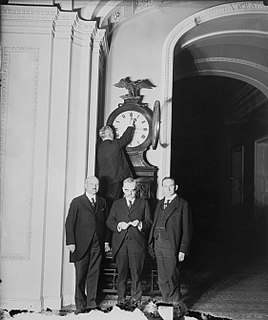
Daylight saving time in the United States is the practice of setting the clock forward by one hour during the warmer part of the year, so that evenings have more daylight and mornings have less. Most areas of the United States and Canada observe daylight saving time (DST), the exceptions being Arizona, Hawaii, and the overseas territories of American Samoa, Guam, the Northern Mariana Islands, Puerto Rico, and the United States Virgin Islands. The Uniform Time Act of 1966 established the system of uniform daylight saving time throughout the US.
Samoa uses UTC+13:00 as standard time and UTC+14:00 as daylight saving time, which it observes during summer in the Southern Hemisphere. In 2011, daylight saving time ended on Saturday, 2 April 2011, 04:00 local daylight time and started on Saturday, 24 September 2011, 03:00 local standard time. Because it is located near the equator, Samoa traditionally did not observe daylight saving time. The introduction of daylight saving time was initially planned for 2009 but was postponed for one year in the aftermath of the 2009 Samoa tsunami.

The choice of whether to use daylight saving time (DST) in Australia is a matter for the individual states and territories. However, during World War I and World War II all states and territories had daylight saving by federal acts under section 51 of the constitution (defence). In 1968 Tasmania became the first state since the war to practise daylight saving. In 1971, New South Wales, Victoria, Queensland, South Australia, and the Australian Capital Territory followed Tasmania by observing daylight saving time. Western Australia and the Northern Territory did not. Queensland abandoned daylight saving time in 1972. Queensland and Western Australia have observed daylight saving over the past 40 years from time to time on trial basis.
Daylight saving time in the Americas is the arrangement in the Americas by which clocks are advanced by one hour in spring and moved back in autumn, to make the most of seasonal daylight. The practice is widespread in North America, with most of Canada, Mexico, and the United States of America participating, but much less so in South America.

As of 2018, daylight saving time (DST) is permanently observed in Morocco. Previously, time was advanced to UTC+01:00 at 02:00 on the last Sunday of March, and reverted to UTC±00:00, defined as Greenwich Mean Time locally, at 03:00 on the last Sunday of October. This practise was continued through October 2018, after which clocks were permanently advanced. An exception was made during the month of Ramadan during which clocks reverted to UTC+00:00.

As of 2017, daylight saving time is used in the following Asian countries:

The only African countries and regions that use daylight saving time are:
Parts of Australia, New Zealand, Fiji and Samoa are areas of Oceania that currently observe daylight saving time (DST).
References
- ↑ "Samoa's Daylight Saving Starts in September 2010". Timeanddate.com. Retrieved 2016-03-10.
- ↑ "DST News - Samoa Daylight Saving Time news". Worldtimezone.com. Retrieved 2016-03-10.
- ↑ McCabe, Joanne (May 9, 2011). "Samoa to change time zones and move forward by a day". Metro. Archived from the original on December 28, 2012.